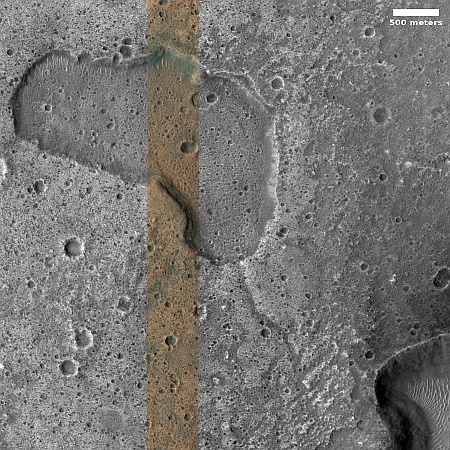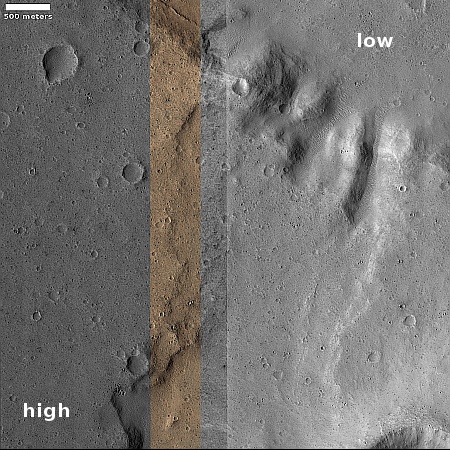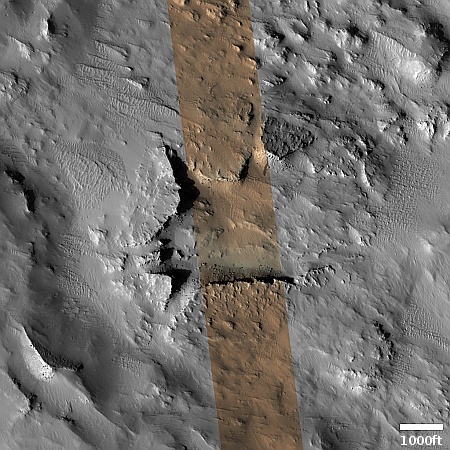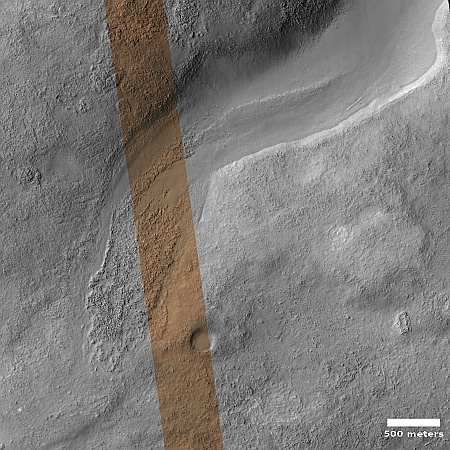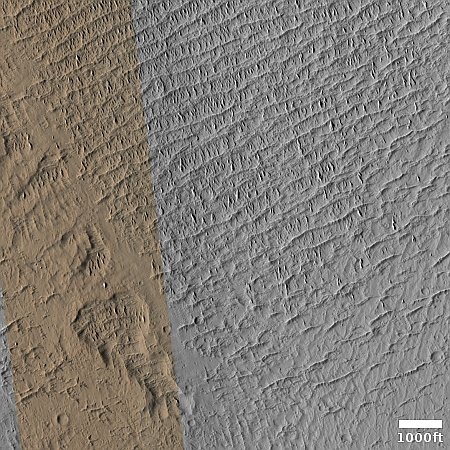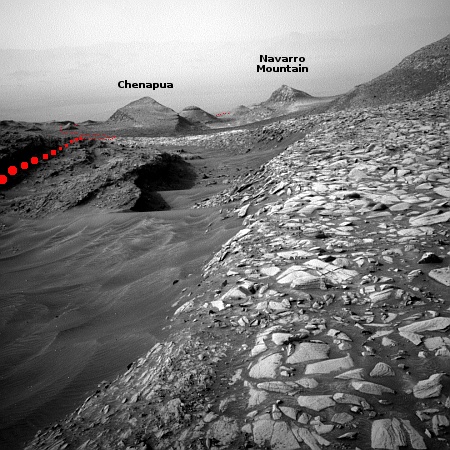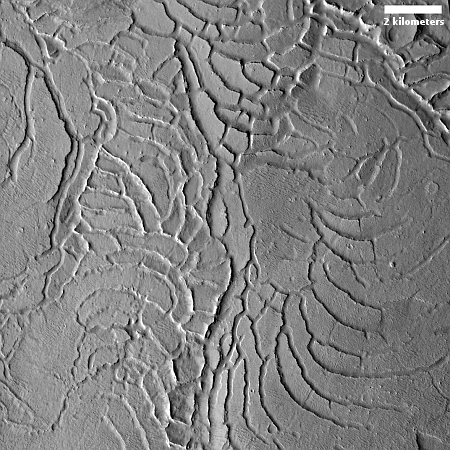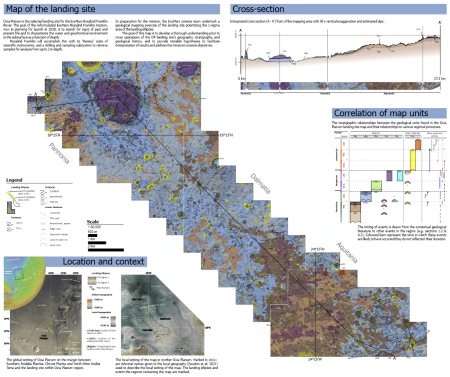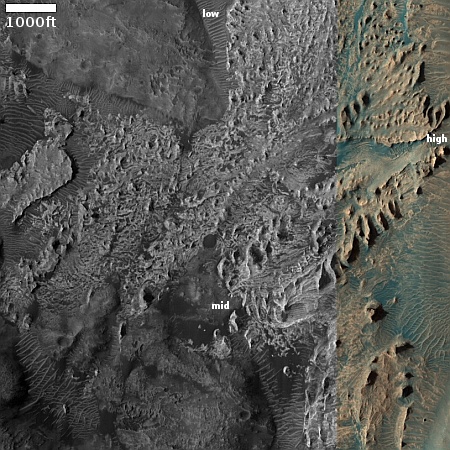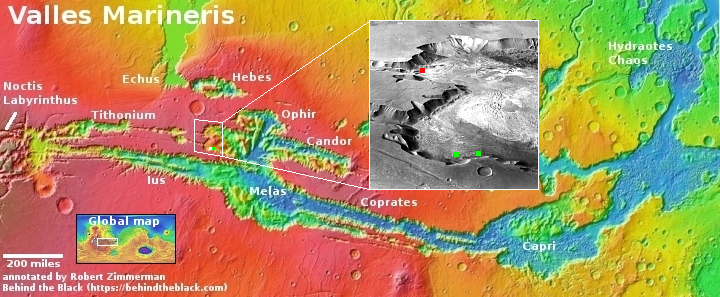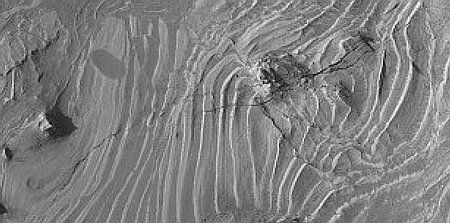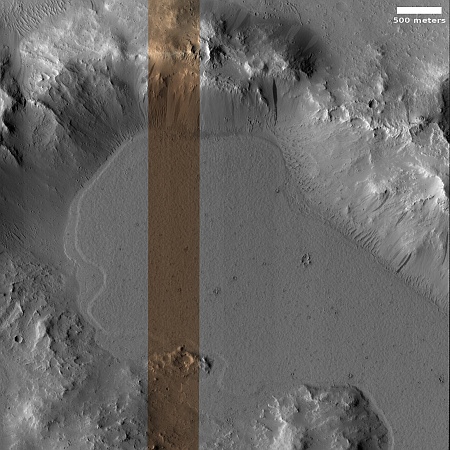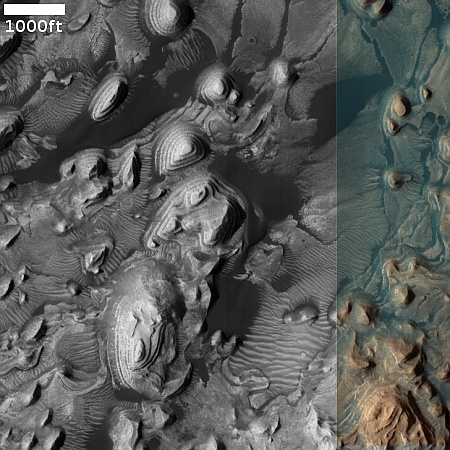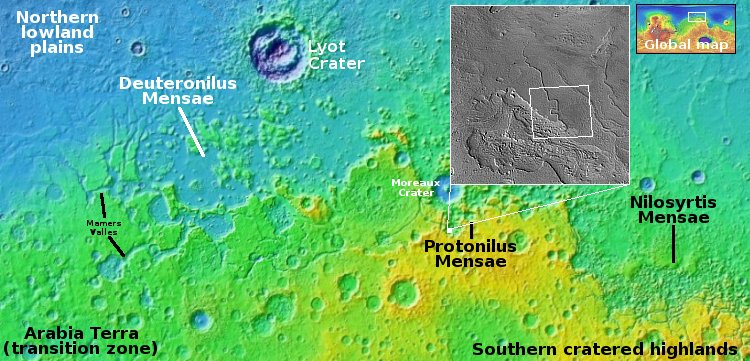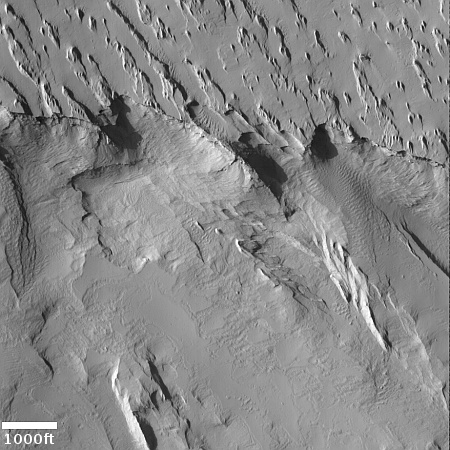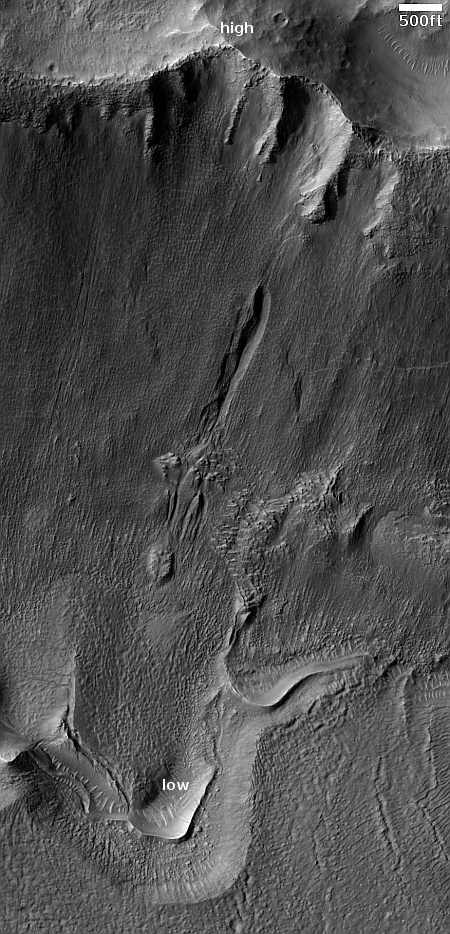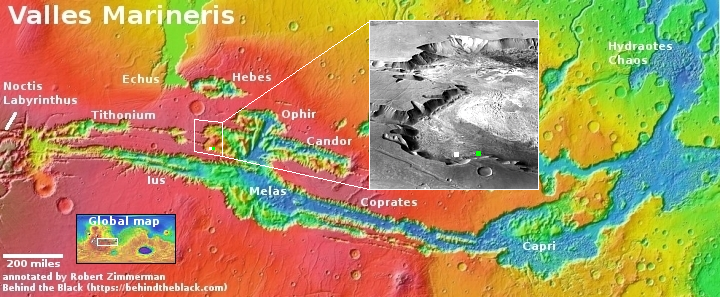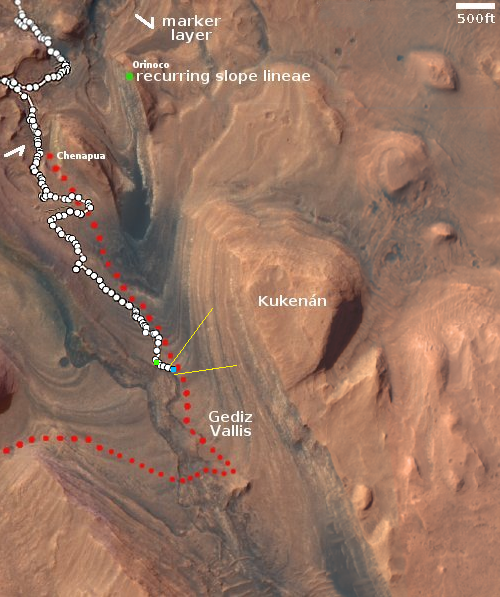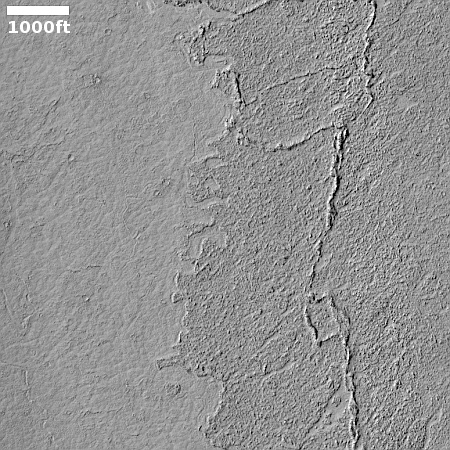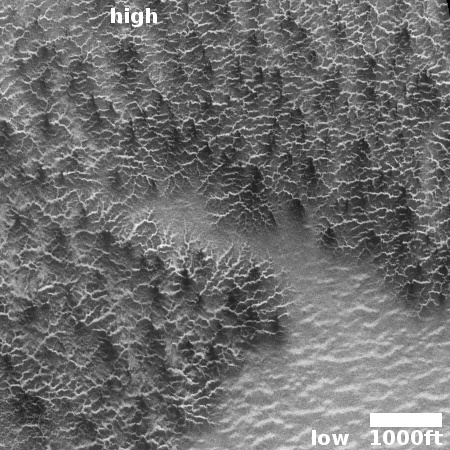Flat tadpole depression in ancient Martian crater
Cool image time! The picture to the right, rotated, cropped, reducedl, and enhanced to post here, was taken on February 24, 2024 by the high resolution camera on Mars Reconnaissance Orbiter (MRO). Dubbed a “terrain sample” by the camera team, it was likely taken not as part of any specific research project but to fill a gap in the camera’s schedule so as to maintain that camera’s proper temperature. When they have to do this, they try to pick interesting targets, though there is no guarantee the result will be very interesting.
In this case the camera team already knew this location would have intriguing geology, based on an earlier terrain sample taken a year ago only eight miles to the south. The landscape here is a flat plateaus surrounding flat depressions, some of which appear connected by drainage channels. Today’s picture shows one flat depression with a short tail-like channel flowing into it.
Note the pockmarked surface. The many holes could be impact craters, but they also could be holes caused when the near-surface ice at this location sublimated into gas and bubbled upward to escape. Now all we see is dry bedrock, the flat ground riddled with holes.
» Read more
Cool image time! The picture to the right, rotated, cropped, reducedl, and enhanced to post here, was taken on February 24, 2024 by the high resolution camera on Mars Reconnaissance Orbiter (MRO). Dubbed a “terrain sample” by the camera team, it was likely taken not as part of any specific research project but to fill a gap in the camera’s schedule so as to maintain that camera’s proper temperature. When they have to do this, they try to pick interesting targets, though there is no guarantee the result will be very interesting.
In this case the camera team already knew this location would have intriguing geology, based on an earlier terrain sample taken a year ago only eight miles to the south. The landscape here is a flat plateaus surrounding flat depressions, some of which appear connected by drainage channels. Today’s picture shows one flat depression with a short tail-like channel flowing into it.
Note the pockmarked surface. The many holes could be impact craters, but they also could be holes caused when the near-surface ice at this location sublimated into gas and bubbled upward to escape. Now all we see is dry bedrock, the flat ground riddled with holes.
» Read more

